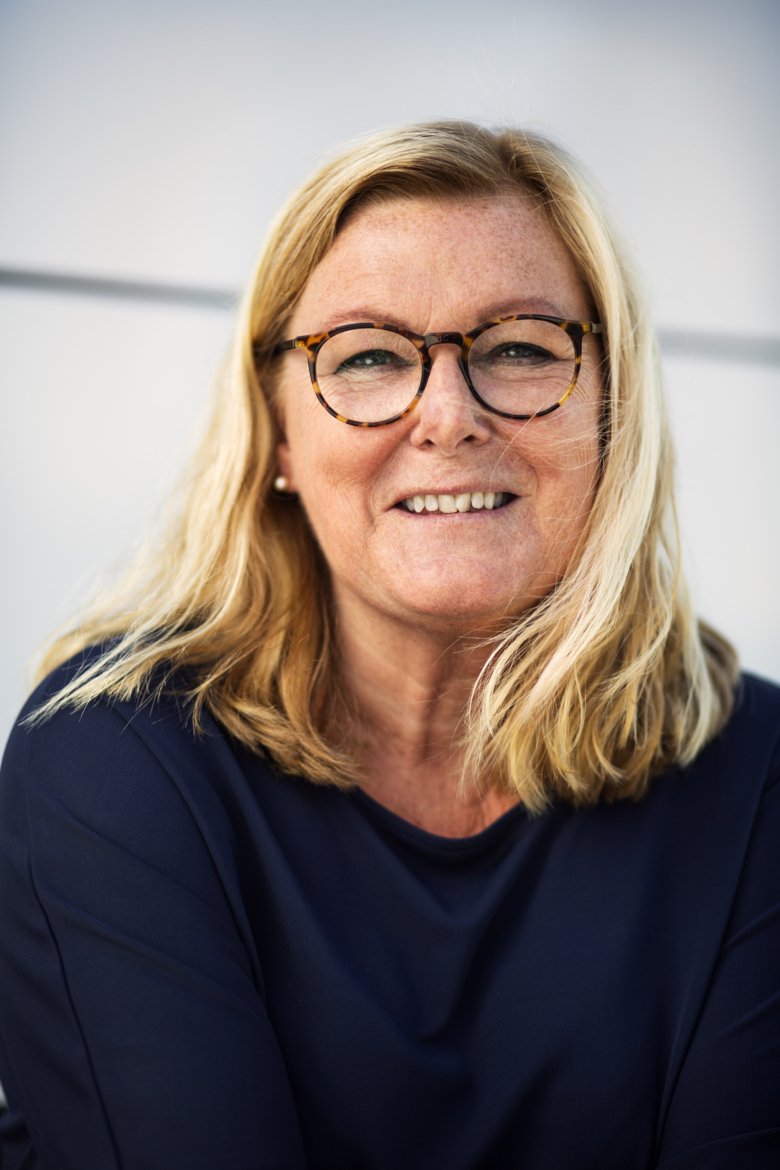Introducing physical activity in cancer care
After witnessing the positive effects that exercise has had on the wellbeing of breast cancer patients, Yvonne Wengström is certain where she stands: It’s time to introduce physical activity in cancer care across the board.
Name: Yvonne Wengström
Title: Professor of Nursing Research at the Department of Neurobiology, Care Sciences and Society, Karolinska Institutet
Age: 59
Family: Husband and two sons, four grandchildren.
Motto: The only constant thing in life is change.
How I relax: Sailing, being out in nature. I love to sail towards an endless horizon and let the wind determine the course.
Role model: Ingalill Rahm Hallberg, Professor Emerita at Lund University. She has developed and been a driving force behind nursing science research nationally and internationally with a focus on intervention studies.
Best attributes as a researcher: Inquisitive and stubborn. If I can’t go to the right, I’ll try going to the left or straight forward.

Text: Cecilia Odlind. First published in Medicinsk Vetenskap nr 3 2019.
"I thought I did so little but I saw that it meant so much."
Her interactions with breast cancer patients made the new oncology nurse Yvonne Wengström feel that she had found the right profession, and this was the beginning of the 1990s. But pretty soon she understood that it would take more than empathy to improve the care provided to any great extent.
“I understood that research was what was needed. This can generate knowledge that can provide both tools and a mandate to influence,” she says.
Since then she always has one foot in the research – at the Department of Neurobiology, Care Sciences and Society, Karolinska Institutet – and the other in the clinical work at Karolinska University Hospital.
“It’s a perfect combination. It keeps me up to date on current clinical research issues and helps me understand how solutions can be implemented in healthcare. Admittedly, I’m always struggling to keep up, but it’s worth it,” laughs Yvonne Wengström.
Wanted to relieve symptoms
The questions have always revolved around how to relieve symptoms in patients with cancer, both from the disease and from the treatment.
“In my early research, I evaluated the possibility of supporting patients’ self-care through special nurse-led clinics. But after a few years I felt we were treading water, and I was frustrated. There were so few interventions at our disposal,” she says.
At the same time, they were receiving more and more questions about exercise and cancer from the patients: Can you exercise while receiving treatment? Is it dangerous? How should you exercise?
“At the time we always recommended rest. We essentially said that it was not advisable to exercise in conjunction with ongoing treatment,” says Yvonne Wengström.
But then studies started to appear that suggested the opposite was true, that physical activity could be positive. In 2009, Yvonne Wengström returned from a three-year period as a professor in Scotland. Reinvigorated with new knowledge, she started building a collaboration group together with specialists in other fields such as physiology and molecular biology. This became the backbone of a research group with the ambition of being able to answer the patients’ questions.
Study provided answers
Ten years later, the results from their research shows that patients with breast cancer have everything to gain from prioritising their exercise.
In a study called OptiTrain, which started in 2013, the effects of two training programmes were studied: high-intensity interval training combined with either weight training or with fitness training, twice weekly for the 16 weeks that the chemotherapy treatment took. The control group was given a general recommendation to exercise, but were not given the supervised training programme or the support received by the other women. Measurements of the activity levels showed that the control group had exercised less.
“Both training groups indicated that their quality of life had improved and they had fewer symptoms such as pain. They were also sick-listed for a shorter time and made an earlier return to work after their period of illness. We also observed a clear mitigating effect on the severe form of tiredness that affects many cancer patients, so-called fatigue. The training groups were also hospitalised to a lesser extent compared to the control group during the chemotherapy treatment period. The most pronounced effect was experienced by women engaged in combination training,” says Yvonne Wengström.
Exactly what causes the effects of the training is something that Yvonne Wengström’s research group has not been able to answer, but the training appears to counteract the negative effects of the treatment.
“Chemotherapy breaks down cancer cells but also other healthy cells in the body. Training, on the other hand, builds up the body. We observed, for example, that the muscle cells became larger and that more blood vessels were formed compared to the control group,” she says. “We are currently analysing blood tests from the patients to see whether training can affect the inflammatory process during and after chemotherapy treatment. We are also studying if, and to what extent, inflammatory markers have an impact on cancer-related fatigue, where the cause is not yet known,” she says.
The effects of training on the tumour itself have not been studied by Yvonne Wengström in her research.
“The prognosis if anything seems to improve with training according to other research, but it is unclear why. There are studies both on mice and human subjects suggesting that increased blood circulation can make chemotherapy treatment more effective,” she says.
The effects of working out persists
During long-term follow-ups, Yvonne Wengström’s research group has also seen that the positive effects of having worked out during the treatment persist both one and two years after finishing treatment. This can be explained, for example, through the habit of exercising being something that continues afterward.
“When the patients have discovered how good they feel from the training, there are many who keep it up.”
Today there are around 800 international studies on training and different forms of cancer that have included over 50,000 patients. Everyone can exercise, it is never too late to start, and the side effects are no worse than muscle soreness. The best effect was achieved by those who had never worked out before. That sounds easy, but is it really so obvious to prioritise exercise in the middle of the physiological and psychological crisis that comes with cancer treatment?
“Cancer patients have the same barriers to exercise as everyone else. They lack the time, energy and motivation. In our study, we had a fitness physiologist and a nurse who encouraged the patients to get stuck into the training, which was often helpful. In the same vein, we are currently developing an app where you can create your own avatar that can hopefully give you the corresponding support.”
However, Yvonne Wengström also mentions something she calls a teachable moment. In an existential crisis – as when you are diagnosed with a life-threatening illness – a learning window often opens where we feel extra motivated to make lifestyle changes.
“The patient feels that they want to take care of themselves in the best way and wants to know everything about how to do this. It’s important that healthcare professionals are ready to support and coach the patient at this point so that they can prioritise physical activity,” she says.
This requires training of both the general public and healthcare professionals, something that Yvonne Wengström has initiated on several fronts. It is about increasing knowledge in general on the positive effects of physical exercise, but also on more specific issues surrounding the combination of cancer and training.
Yvonne Wengström is currently trying to introduce widespread training support for cancer patients in healthcare.
“It’s time to offer training as part of the cancer treatment for all patients,” she says.
To succeed with the implementation, it will also be required that politicians understand the benefits at a societal level so that resources can be allocated. But it is at the individual level that Yvonne Wengström finds her motivation.
“It’s great to see how the training makes these women happier, stronger and more energetic. It can mean so much to experience health despite being sick.”
Text: Cecilia Odlind. First published in Medicinsk Vetenskap nr 3 2019.
Yvonne Wengström on
…training as a religion
The aim is not for everyone to become elite athletes. It’s more about finding exercise formats that you think are fun and that you can fit into your everyday life. Do you hate running? Do something else.
…gender equality and training opportunities
I have seen women from less equal environments who are expected to take care of the home despite their illness, and they don’t have time to exercise.
…being someone who moves from one thing to the next
For a while I did yoga, for a while it was weight training. Now I try to walk at least 14,000 steps a day. The most important thing is to get moving and do an activity that raises your pulse.
…weight and training
Many people with cancer put on weight. But we could observe in one study that exercise counteracted this and in some cases resulted in weight loss.
 Photo: Creative Commons CC0
Photo: Creative Commons CC0Cancer Research KI
Cancer Research KI is an overarching umbrella organisation and single point of entry to cancer research at Karolinska Institutet, that includes some 250 research groups. The aim is to bring together top-level cancer scientists from different disciplines, with the overall goal to generate new discoveries that can be rapidly translated into clinical practice for the benefit of patients and society.
